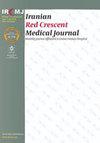基于机器学习模型检测与小细胞肺癌诊断相关的潜在遗传标记物
IF 0.2
4区 医学
引用次数: 0
摘要
背景:小细胞肺癌(SCLC小细胞肺癌(SCLC)属于难治性癌症,存活率很低。了解小细胞肺癌的病理生理学发展途径对创造有效的治疗方法至关重要。 研究目的本研究旨在对 SCLC 和正常肺组织的基因表达数据进行分类,并找出导致 SCLC 的关键基因。 方法本研究使用了来自 18 名患者的 SCLC 组织和正常肺组织(邻近组织)的芯片表达数据。通过五倍交叉验证,建立了极端梯度提升(XGBoost)模型进行分类。准确率(AC)、平衡准确率(BAC)、灵敏度(Sens)、特异性(Spec)、阳性预测值(PPV)、阴性预测值(NPV)和 F1 分数被用于性能评估。 结果来自 XGBoost 模型的 AC、BAC、Sens、Spec、PPV、NPV 和 F1 分数分别为 90%、90%、80%、100%、100%、83.3% 和 88.9%。根据 XGBoost 得出的变量重要性值,HIST1H1E、C12orf56、DSTNP2、ADAMDEC1 和 HMGB2 基因可被视为 SCLC 的潜在生物标志物。 结论基于机器学习的预测方法发现了可能作为SCLC生物标志物的基因。在接下来的医学研究中对获得的基因进行临床确认后,就可以在临床实践中确定其治疗用途。本文章由计算机程序翻译,如有差异,请以英文原文为准。
Machine Learning Model-based Detection of Potential Genetic Markers Associated with the Diagnosis of Small-cell Lung Cancer
Background: Small-cell lung cancer (SCLC), which is in the category of intractable cancers, has a low survival rate. It is essential to understand the pathophysiological pathways underlying its development to create powerful treatment alternatives for the disease. Objectives: This study aimed to classify gene expression data from SCLC and normal lung tissue and identify the key genes responsible for SCLC. Methods: This study used microarray expression data obtained from SCLC tissue and normal lung tissue (adjacent tissue) from 18 patients. An Extreme Gradient Boosting (XGBoost) model was established for the classification by five-fold cross-validation. Accuracy (AC), balanced accuracy (BAC), sensitivity (Sens), specificity (Spec), positive predictive value (PPV), negative predictive value (NPV), and F1 scores were utilized for performance assessment. Results: AC, BAC, Sens, Spec, PPV, NPV, and F1 scores from the XGBoost model were 90%, 90%, 80%, 100%, 100%, 83.3%, and 88.9%, respectively. Based on variable importance values from the XGBoost, the HIST1H1E, C12orf56, DSTNP2, ADAMDEC1, and HMGB2 genes can be considered potential biomarkers for SCLC. Conclusion: A machine learning-based prediction method discovered genes that potentially serve as biomarkers for SCLC. After clinical confirmation of the acquired genes in the following medical study, their therapeutic use can be established in clinical practice.
求助全文
通过发布文献求助,成功后即可免费获取论文全文。
去求助
来源期刊

Iranian Red Crescent Medical Journal
医学-医学:内科
自引率
0.00%
发文量
0
期刊介绍:
The IRANIAN RED CRESCENT MEDICAL JOURNAL is an international, English language, peer-reviewed journal dealing with general Medicine and Surgery, Disaster Medicine and Health Policy. It is an official Journal of the Iranian Hospital Dubai and is published monthly. The Iranian Red Crescent Medical Journal aims at publishing the high quality materials, both clinical and scientific, on all aspects of Medicine and Surgery
 求助内容:
求助内容: 应助结果提醒方式:
应助结果提醒方式:


